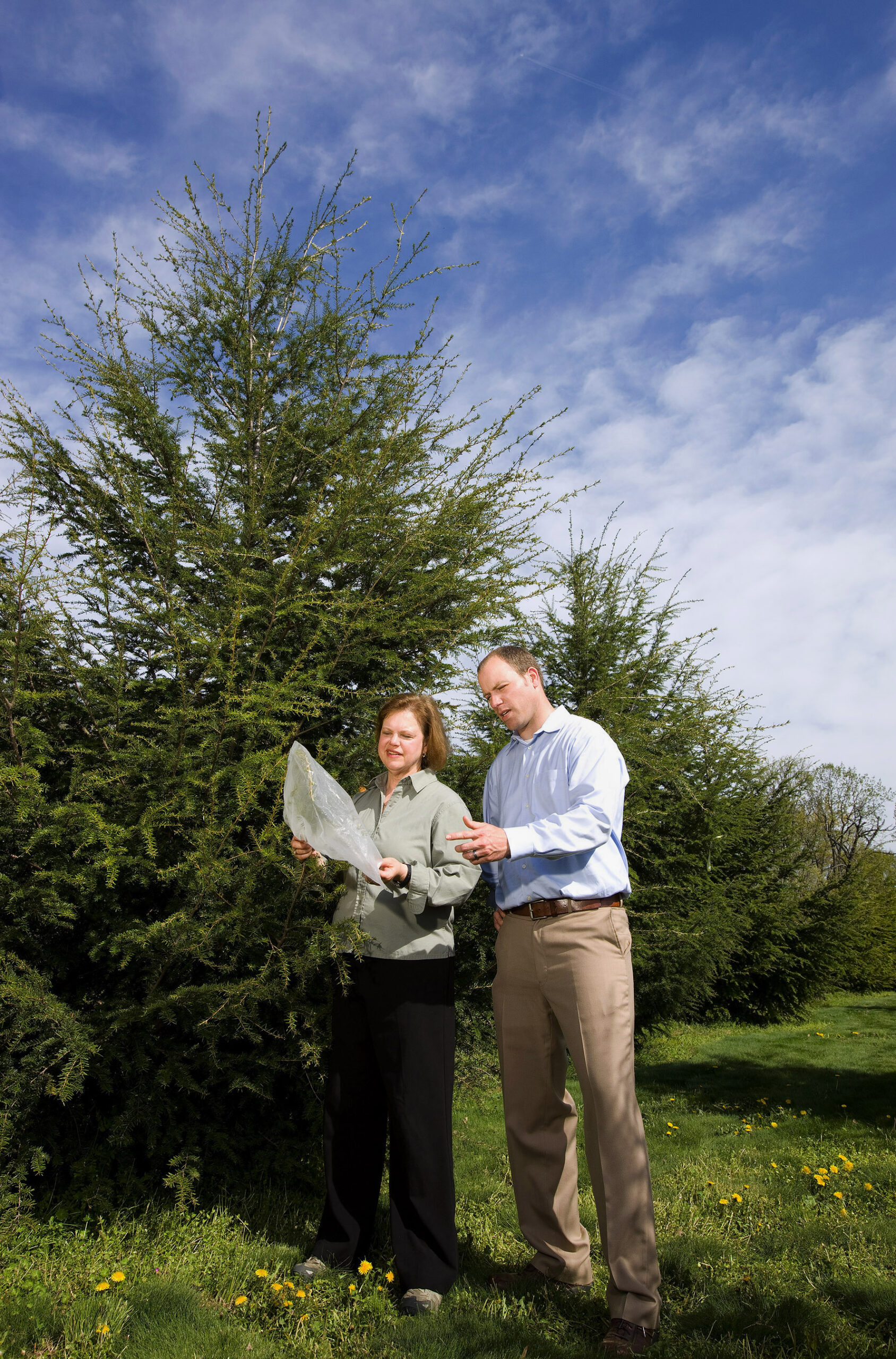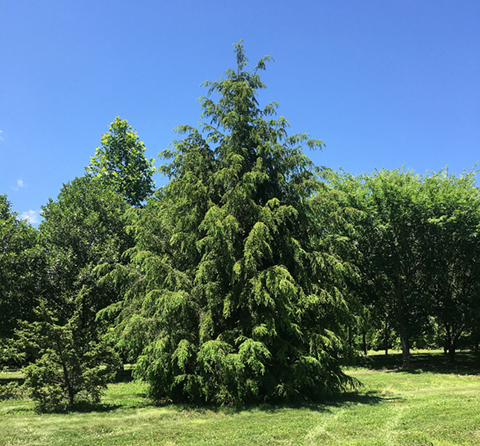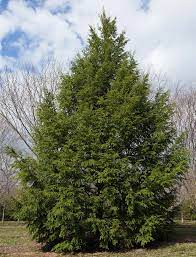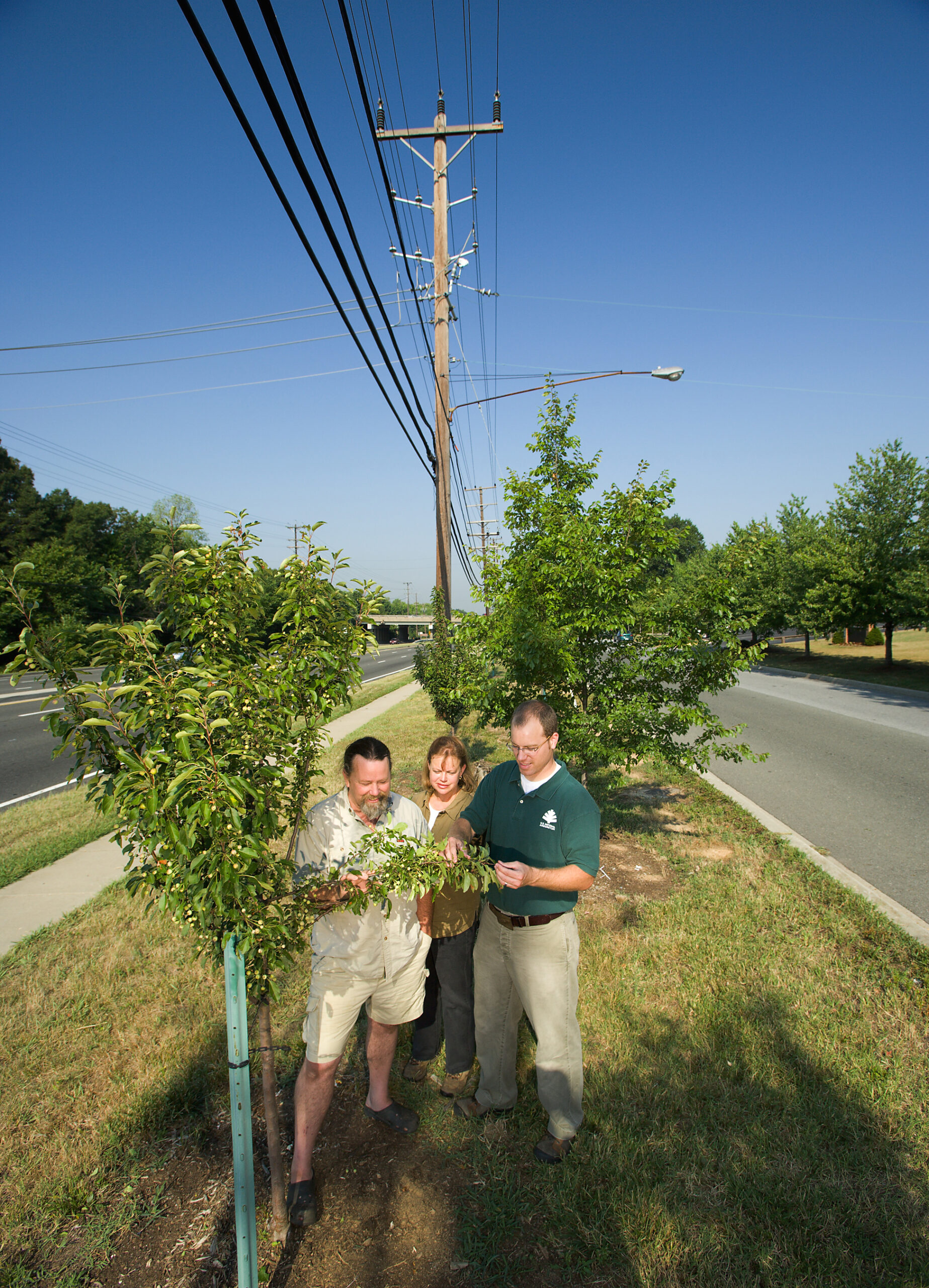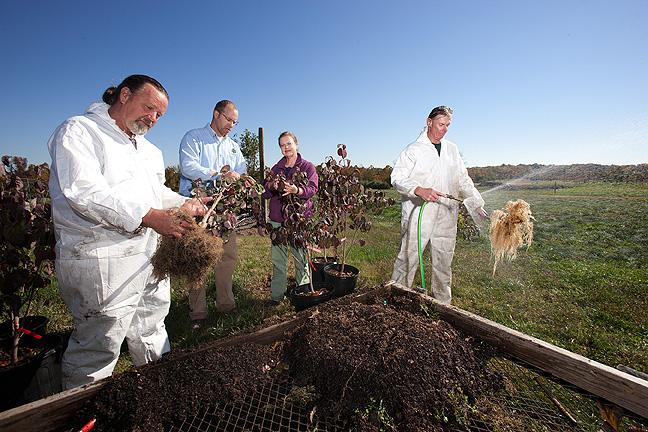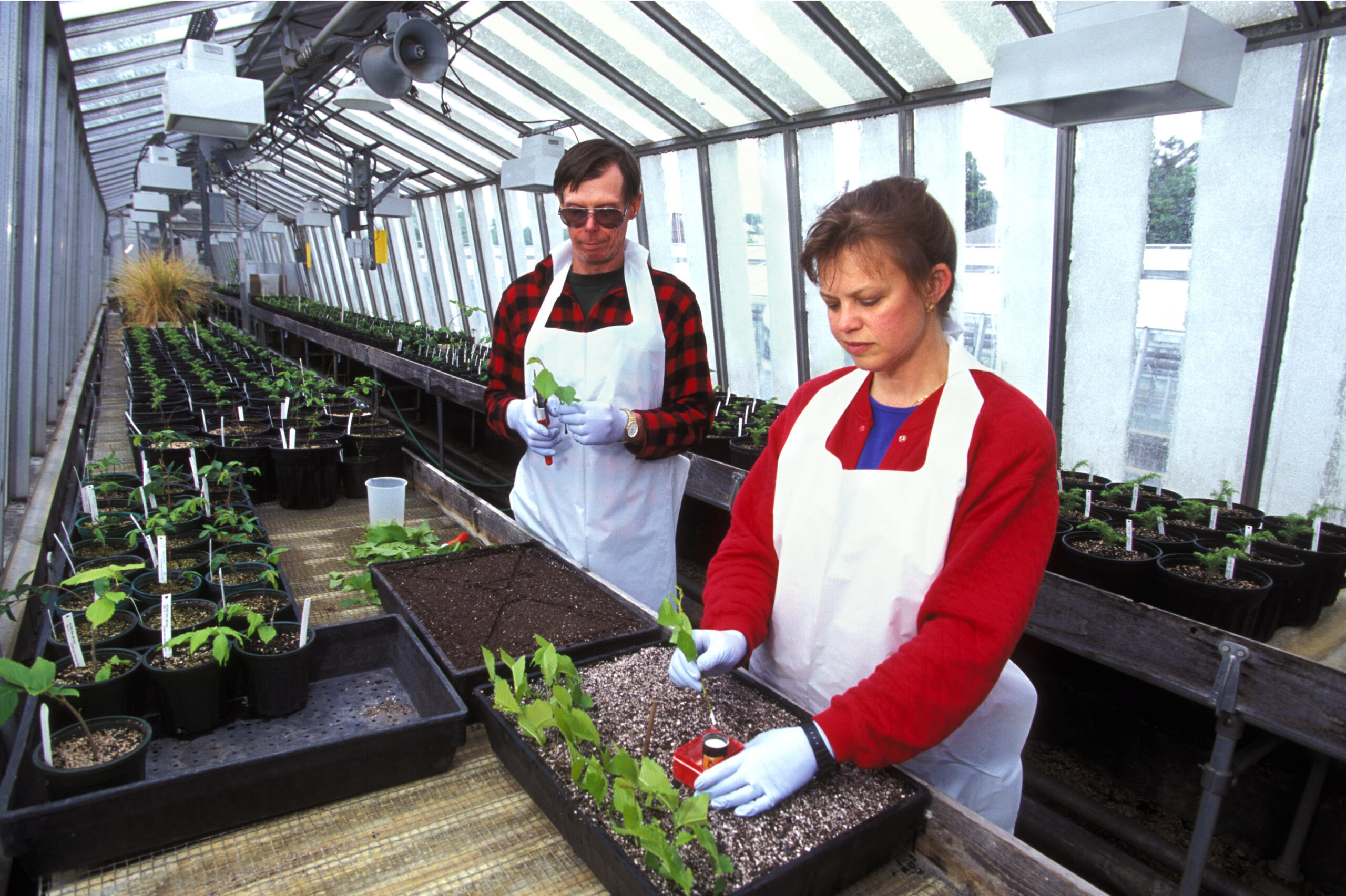
Career Spotlight: Susan Bentz
Have you ever admired the soft, sweeping branches of a hemlock tree and then wondered why so many once verdant canopies are turning a shade of gray along the East Coast? And if anyone is trying to save them? Meet Susan Bentz, horticulturist and researcher at the U.S. National Arboretum (USNA). For over 40 years, Bentz has been behind the scenes of some of the country’s most important tree conservation work, including a decades-long effort to outsmart one of North America’s sneakiest forest villains: the hemlock woolly adelgid (Adelges tsugae).
With early inspiration from her family and her time in 4-H, Bentz found her way to plant science through her studies in biology and her graduate work at the University of Maryland. In the early 1980s, she joined the U.S. National Arboretum (USNA), a federal research center in the USDA-Agricultural Research Service (USDA-ARS), as a support scientist. However, those who worked alongside her say the term “support” undersells her leadership, expertise, and impact.
Bentz worked with several generations of Arboretum scientists, beginning with Dr. William Ackerman (camellias and irises), followed by Dr. Alden “Denny” Townsend (American elms and maples) and later Dr. Richard Olsen (Catalpa, boxwood) and Dr. Fred Gouker (boxwood), with whom she worked on major national initiatives on trees under threat from invasive pests.
“I like the process of plant breeding from beginning to end,” Bentz says. “How things get introduced, not only what information you have to develop scientifically, but I mean how to distribute them, and then what the other requirements are for introducing a new plant.” And thank goodness she does.
Horticulturist Susan Bentz (left) and geneticist Dr. Richard Olsen (right) examine bagged branches of hybrid hemlocks inoculated with hemlock woolly adelgid. Photo by Peggy Greb via USDA. Click the photo to view in full screen.
Tiny Pest, Massive Problem
Since the 1950s, the hemlock woolly adelgid has been decimating native hemlocks up and down the East Coast. This includes both Eastern hemlocks (Tsuga canadensis) and Carolina hemlocks (Tsuga caroliniana). The bug, no bigger than a fleck of dryer lint, sucks sap from the trees and leaves behind a trail of “gray ghost” forests, which are dead hemlocks stripped of their signature evergreen elegance.
In the early 1990s, the Forest Service called. Could the USNA help breed resistance into these beloved trees? Her then-supervisor, Dr. Denny Townsend, said yes. They set out to track down the tiny adelgid. It wasn’t always easy. “We were staring at machine dust on the branches, thinking maybe that was it,” Bentz recalls with a laugh.
Hemlock Breeding by Paintbrush and Perseverance
Once they found the real pests, the sleuthing began. Bentz dove into crossbreeding native hemlocks with naturally resistant Asian species, using pollen collected by hand and applied with paintbrushes.
With limited trees and a lot of trial and error, the work was slow. But after decades of careful crossing, documenting, and nurturing, Bentz helped introduce two hybrid hemlocks — ‘Traveler’ and ‘Crossroad’ — that show promising resistance to the adelgid.
“These are the first of their kind,” says Dr. Richard Olsen, Director of the U.S. National Arboretum. “And Susan’s name is listed first because it was her project, her leadership, all the way.”
Building a Farm, Mentoring a Generation
Beyond hemlocks, Bentz helped build the USNA’s South Farm site in Beltsville, Maryland, part of the Beltsville Agricultural Research Center (BARC).
“We started from scratch,” says Bentz’s former USNA colleague Kevin Conrad. “We facilitated irrigation systems and installed some of them, put up a deer fence, planted, managed, facilitated office space, and two trailers.” Alongside colleagues Martin Scanlon, Tom Abell, and Bill Phelan, they turned an empty field into a thriving hub for tree breeding and plant trials. The 50-acre site is a research center for the USDA-ARS. BARC is also home to the Woody Landscape Plant Germplasm Repository (WLPGR), a gene bank associated with the USNA that plays a vital role in conserving and improving woody landscape plants, which include trees, shrubs, and vines used in landscaping.
Bentz has conducted a lot of tree breeding work with hemlock, black gum, magnolia, and multiple other genera. “There was a lot of science going on,” Conrad notes, adding that Sue has mentored many interns and early career researchers. “The amount of educational and sharing experiences and expertise that happened over the past 20 years at South Farm is profound. She really had an impact on many, many people. Sue was instrumental in making all that work.”
Many of those former colleagues have gone on to earn PhDs and take leading roles in horticulture around the country.
Always Adapting: From Boxwood Blight to Power Lines
Bentz’s adaptability has been a key factor in her success. When boxwood blight hit the industry in 2011, she assisted by collecting germplasm, working with representatives in the nursery industry looking at resistance, and pulling together a reference collection.
She also helped lead the Power Trees Project, partnering with colleagues at the USNA, utilities, and urban foresters to identify trees suited for planting beneath power lines. These kinds of trees are tough, compact, and beautiful. They are also essential for extreme weather–resilient cities, offering shade, reducing energy use, and keeping streets cool and green.
Bill Phelan (left), Susan Bentz (middle), and Dr. Richard Olsen (right) evaluate a Malus crabapple tree. This cultivar, Adirondack, was developed by U.S. National Arboretum scientists. Photo by Stephen Ausmus via USDA. Click the photo to view in full screen.
Top photo: Before these dogwoods can be shipped to Japan, technician Bill Phelan (left) removes potting media while geneticist Richard Olsen and horticulturist Susan Bentz inspect the leaves. Gardener Tom Abell (right) washes the roots to prepare for inspection for pests, pathogens, and overall plant health. Photo by Peggy Greb via USDA.
Bottom photo: Thomas Abell (left) and Susan Bentz (right) plant cuttings from disease tolerant elms. Photo by Scott Bauer via USDA.
Click the photos to view in full screen.
A Legacy of Quiet Dedication
If you’re picturing a lab coat, think again. Picture instead Bentz up in a tree with a paintbrush, knee-deep in irrigation lines, or hauling dogwoods onto pallets bound for Japan (true story: she helped Dr. Olsen ship 1,800 of them as part of a diplomatic exchange).
She’s also a co-creator with Ruth Dix and Dr. Margaret Pooler of the USNA’s cultivar fact sheets, which documented the stories behind major plant introductions long before online archives were the norm.
“She bridges the early legends of the Arboretum with the new generation,” Olsen says. She’s mentored us all.”
Why It Matters
The work Bentz and her colleagues do takes decades of patience. It often involves snow, bugs, and broken water lines. But the payoff? More resilient forests. Better trees that can sustain extreme weather. Beauty and biodiversity in our neighborhoods.
“Susan’s passion and persistence have kept native hemlocks — and many other trees — alive and well in our cities and forests,” says Conrad. “ARS is a better place for having her.”
Thanks to researchers like Bentz and the collaborative networks she helps foster, hope remains that Eastern and Carolina hemlocks can be saved for future generations—not only as iconic elements of the American landscape but as vital components of our forest ecosystems.
Learn More
Bridget DeSimone is a communications consultant and writer for Friends of the National Arboretum. She is an experienced public relations professional and journalist who has worked extensively with scientific researchers and nonprofit organizations.


